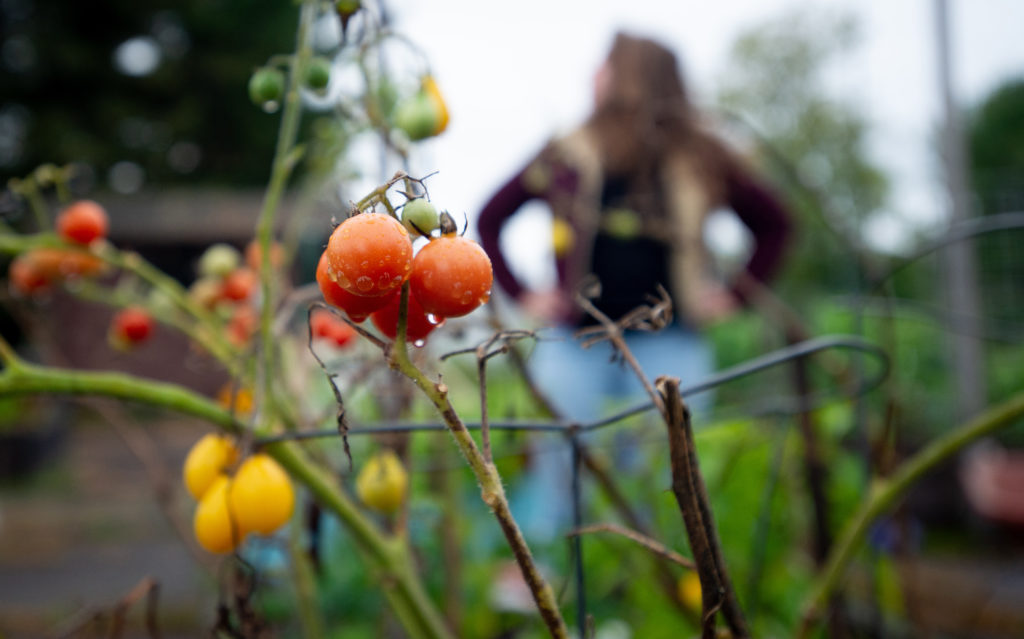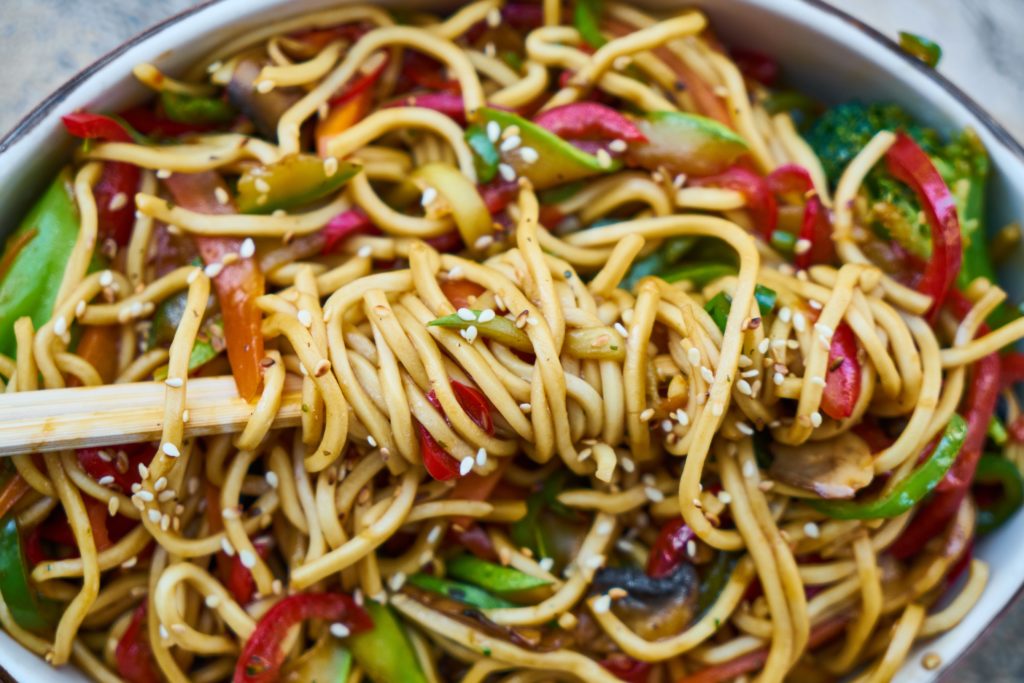8 things I learned from eating vegan for a week

Plant-based diets are all the rage right now, which is generally good news for the planet. According to a 2018 study from the University of Oxford, eating a vegan diet — one that omits all animal-made products, including meat, dairy, eggs and even honey — can reduce an individual’s carbon footprint by nearly 75 percent, depending on where you live.
The raw figures can belie the nuance of the issue. For example, a 2015 study from Carnegie Mellon University showed that not all plant-based diets are created equal when it comes to carbon emissions, while some meat producers have managed pastures in such a way that absorb more greenhouse gases than they emit.
Regardless, the current levels of meat consumption are generally accepted as unsustainable. Yet another 2018 study showed that to keep global temperatures from rising above the 2 degrees Celsius threshold that scientists agree will lead to catastrophic climate change, sweeping eating changes are needed. The average world citizen needs to eat 75 percent less beef, 90 percent less pork and half the number of eggs, while tripling consumption of beans and pulses (read: protein-rich beans, lentils and peas) and quadrupling nuts and seeds.
“That’s not so bad,” I thought when I first saw the study. I could meet these goals while still getting to enjoy the tasty meats and cheeses from my favorite Maine farmers.
But then I took stock of the animal products consumed in my household on an average day: bacon and eggs with buttered toast for breakfast, turkey sandwiches with mayonnaise for lunch and perhaps chicken enchiladas, grilled pork chops or pasta with sausage for dinner on a normal day. Rinse and repeat, seven days a week. The only plant-based resident of my little Bangor apartment is Hector the rabbit.
Through my mental inventory, I realized I don’t really know how to cook without animal products. Most of the meals in my household are centered around meat. My go-to lazy meal always seems to involve eggs in some way, whether it’s a quick omelet or pad thai with chunks of scramble. Butter is my … well, my bread and butter.
I needed a reset on my eating habits, and to gain a few more plant-based cooking skills. I decided to try eating vegan for a week. Even though I am unlikely to become a full-time vegan, I figured the challenge would be like a cleanse for my culinary routine. Here’s what I learned.
1. Finding a vegan mentor will make the transition easier (and more fun).
Perhaps the most intimidating thing about deciding to eat vegan — or even more plant-based in general — is that first trip to the grocery store. There are so many mysterious packages with “vegan” labels, and yet even more opportunities to screw up because of a hidden egg, milk or honey on seemingly plant-based products.
Fortunately, I found a mentor: Natalie Williams, the Bangor Daily News’s digital editor who has been vegan for over a decade (and recently helped me out in making homemade nut butter). Natalie actually participates in a program called Vegan Outreach, where she helps mentor new vegans, so she was already a seasoned pro in guiding newbies on their plant-based journey.

Natalie took me shopping at the Natural Living Center in Bangor one Saturday afternoon. All of a sudden, the daunting task was a fun weekend adventure. She pointed out some of her time-tested favorite products, and we even went halfsies on some new vegan treats that she had been meaning to try. How else would I have known which chocolate bars at the checkout are vegan, or that there is one vegan mayonnaise that reigns supreme?
2. Eating vegan is not as expensive as you think it is.
Shopping for vegan products did not cost any more than it would have if I had been buying meat to sustain myself for the week. Sure, produce can be expensive, vegan snacks cost more than their conventional counterparts and if you are buying in bulk, it can be costly at the outset. But if you follow some simple tips for saving money on groceries, buy what’s in season and plan your meals in advance, I swear it doesn’t cost any more than if you were eating meat for every meal.
3. You become a protein hound.
It seems like the thing that non-vegans are most concerned about when you tell them you’re eating vegan is whether or not you are eating enough protein. What’s with that, non-vegans? You’re probably eating more protein than you need to, at the expense of other important vitamins and minerals.

Still, the haters made me hyper-conscious of how I was going to be filling my belly and fueling my body. I didn’t find it especially difficult, though, once I knew of the key players. Beans are essential, as is tofu (I was not so bold as to try seitan or any other plant-based protein products, but I hear they are tasty). Other sleeper MVPs include chia seeds and nutritional yeast.
4. With proper planning, you’re not as hungry as you think you’ll be…
I was surprised how satiated and full I felt during the day over the course of my vegan week. I was less snacky than I usually am. I worked out on my regular workout schedule and didn’t feel faint or hungry at any point. My dinners made one evening always wound up stretching into lunch the next day.
I am not exactly sure why, but I’m willing to bet that it was probably because I was eating more whole foods. I didn’t keep a complete record of everything I ate because food diaries make me anxious, but I can tell you in general over the course of the week, I had overnight oats or tofu tacos for breakfast; a smashed chickpea salad sandwich for lunch (or leftovers from dinner)’; and quinoa and black bean stuffed sweet potatoes, vegan lo mein or a tofu and veggie scramble for dinner. Oh, and I ate a lot of almond milk ice cream (which, unlike some of the other switches, left my belly feeling a lot less queasy than my usual dairy-based late night snacking).
5. … But your gastrointestinal system may react at the outset.

It’s a lot of beans, and I’m not going to detail it any more than that, except to briefly apologize to my coworkers and friends. Good news, though: eventually, things settle down. It’s like transitioning to natural deodorant — a little stinky at the start, but ultimately fine.
6. There are some easy switches for your favorite foods.
Unless your favorite food is a raw, bleeding steak (though researchers are on the horizon for that as well), there are so many vegan variations that can hold a candle to their meaty, milky counterparts. The various plant-based milks are perhaps the most obvious choice, but get creative: try a macadamia nut milk pancake, for example. If you don’t want to buy almond milk ice cream, you can also make a shocking tasty, creamy sorbet out of bananas. If you’re just looking to bulk something up that you would normally do with chicken or ground beef, you can use a “meaty” vegetable like eggplant or mushrooms. I know I’m late to the party, but jackfruit makes a scrumptious pulled pork substitute, and you know the meat is just a vehicle for your favorite barbecue sauce anyway.
And, sue me, I like cashew cheese. In the long run, it won’t satisfy my craving for smoky manchego and delightfully stinky brie. But it has a nice flavor and melts pretty well on a cauliflower-crust pizza.
7. International menus are rife with delicious vegan recipes.

Funny story: there are infinite vegan taco recipes on the world wide web. In fact, a lot of international cuisine boasts recipes that are vegan in their original iterations, so they don’t really feel like they’re “missing” something in the same way that some vegan recipes do (vegan mac and cheese isn’t the same. Change my mind, I dare you). For a long time, meat was an expensive luxury, so many dishes centered around plentiful, accessible and cheap plants. Take advantage of that.
8. Spices are essential.
In my experience, proper seasoning is even more essential in vegan fare, especially for the early days of the transition from a less plant-based diet. Nutritional yeast brings a yummy cheesy and nutty flavor from pasta to potatoes. Liquid smoke is great to give that mouth-watering grilled taste to whatever you’re cooking. And maybe this is self-selecting, but I found myself putting turmeric in so many dishes over the course of the week. It is especially useful in tofu “eggs” to give a color that you are used to.
Going vegan isn’t necessarily easy, and taking on this challenge, if you decide to do so, will be different for everyone. However, after a week of eating vegan, it feels possible, no matter where you’re coming from. Plus, I definitely feel like I can incorporate many of these techniques and recipes into my daily life to have a more plant-based diet.

Nice article. Is the nutritional value of vegan meals the same as food cooked with the animal products?